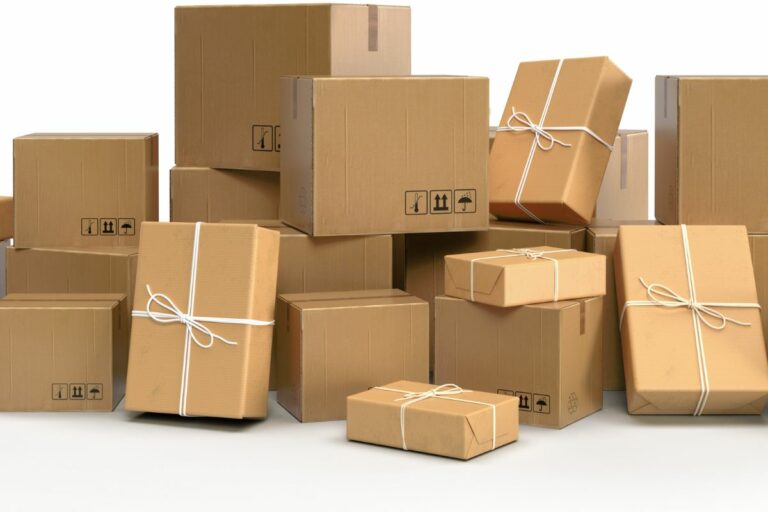Selling on Amazon is a great way to start or grow your business, but it can be challenging if you don’t have any inventory.
Fortunately, there are ways to sell on Amazon without having any in-house stock.
This article will guide you through the steps of selling on Amazon without inventory, including the pros and cons of each method, how to source and price products for your Amazon store, and more.
One option for selling on Amazon without inventory is dropshipping.
With dropshipping, you don’t need to hold any inventory.
Instead, you list products for sale on your Amazon store, and when a customer makes a purchase, you order the product from a third-party supplier who ships it directly to the customer.
This means you don’t have to worry about storing, packaging, or shipping products yourself.
However, there are some downsides to dropshipping, such as lower profit margins and potential issues with product quality and shipping times.
Another option for selling on Amazon without inventory is using Amazon’s Fulfillment by Amazon (FBA) service.
With FBA, you send your products to Amazon’s fulfillment centers, and they handle storage, packaging, and shipping for you.
This means you don’t have to worry about managing inventory or shipping products yourself.
Additionally, FBA offers seller protection against fraud and chargebacks, which helps minimize risk.
However, FBA does come with fees, and you’ll need to carefully manage your inventory to avoid additional storage fees.
Post Contents
What is Amazon Dropshipping?

If you’re interested in selling on Amazon without inventory, then Amazon dropshipping might be the perfect option for you.
Dropshipping is an order fulfillment method that allows you to sell products without keeping them in stock.
Instead, you partner with a third-party supplier who handles the storage, packing, and shipping of the products to your customers.
How Amazon Dropshipping Works
To start dropshipping on Amazon, you’ll need to follow these steps:
- Find a reputable supplier: Look for a supplier that offers high-quality products at competitive prices. You can find suppliers through online directories or by attending trade shows.
- Create your Amazon seller account: Sign up for an Amazon seller account and choose the dropshipping option.
- List your products: Create product listings for the items you want to sell. Include high-quality images and detailed descriptions to attract potential customers.
- Start promoting your products: Use social media, email marketing, and other advertising channels to drive traffic to your Amazon store.
- Receive orders and forward them to your supplier: When a customer places an order, forward the details to your supplier, who will then ship the product directly to the customer.
- Monitor your sales and adjust your strategy: Track your sales and make adjustments to your strategy as needed to maximize profits.
Pros and Cons of Amazon Dropshipping
Like any selling option, Amazon dropshipping has its pros and cons.
Here are a few to consider:
Pros
- Low startup costs: Since you don’t need to purchase inventory upfront, dropshipping is a low-cost way to start an online business.
- Inventory-free selling: With dropshipping, you don’t need to worry about storing or managing inventory, which can save you time and money.
- Flexible work schedule: Dropshipping allows you to work on your own schedule, giving you the freedom to work from anywhere in the world.
- Multiple sales channels: You can sell your products on Amazon and other online marketplaces, giving you access to a larger customer base.
Cons
- Overhead costs: While you don’t need to purchase inventory upfront, you’ll still need to pay for marketing, advertising, and other overhead costs.
- Quality control: Since you’re relying on a third-party supplier to handle the shipping and fulfillment of your products, you’ll need to ensure that they maintain a high level of quality.
- Competition: Dropshipping is a popular method of selling on Amazon, which means you’ll be competing with other sellers for customers.
Overall, Amazon dropshipping can be a profitable and scalable selling option for small businesses and entrepreneurs.
However, it’s important to carefully consider the requirements, costs, and challenges before getting started.
How to Sell on Amazon Without Inventory

If you’re looking to start selling on Amazon without inventory, there are several things you need to consider.
In this section, we’ll walk you through the steps you need to take to get started.
Find a Supplier
The first step to selling on Amazon without inventory is to find a supplier.
You can do this by sourcing products from a third-party supplier or using dropshipping.
Dropshipping is a popular method for selling on Amazon without inventory because it allows you to sell products without holding any physical inventory.
When sourcing products from a third-party supplier, it’s important to ensure that the supplier is reputable and can provide high-quality products.
You should also consider the cost of the products and the shipping fees.
Create Your Amazon Seller Account
To start selling on Amazon, you’ll need to create an Amazon seller account.
You can choose between two selling options: Fulfillment by Amazon (FBA) or Fulfillment by Merchant (FBM).
With FBA, Amazon will handle the storage, shipping, and customer service for your products.
With FBM, you’ll handle all of these tasks yourself.
List Your Products on Amazon
Once you have your supplier and seller account set up, it’s time to list your products on Amazon.
You’ll need to create a product listing that includes a title, description, images, and pricing information.
Make sure your product listing is optimized for search engines to increase your chances of being found by potential customers.
Market Your Products
To increase your sales on Amazon, you’ll need to market your products.
You can do this by using social media, running ads, and optimizing your product listings for search engines.
You should also consider offering promotions and discounts to attract customers.
Manage Your Orders and Customer Service
As orders start coming in, you’ll need to manage your orders and provide excellent customer service.
This includes shipping your products on time, responding to customer inquiries, and handling returns and refunds.
Conclusion
Selling on Amazon without inventory can be a great way to start a low-cost, scalable online business.
By following these steps, you can start selling on Amazon and potentially grow your profits over time.
Tips for Success in Amazon Dropshipping

If you want to succeed in Amazon dropshipping, there are several key things you need to keep in mind.
Here are some tips to help you get started:
Choose the Right Products
The first step to success in Amazon dropshipping is to choose the right products to sell.
You need to find products that are in high demand but not too competitive.
Look for products that have good profit margins and are easy to ship.
You can use Amazon’s Best Seller Rank (BSR) and other tools to help you find the right products to sell.
Price Your Products Competitively
Once you’ve found the right products to sell, you need to price them competitively.
Make sure you’re not pricing your products too high or too low.
You want to be competitive but still make a good profit.
Use Amazon’s pricing tools to help you find the right price for your products.
Provide Excellent Customer Service
Customer service is key to success in Amazon dropshipping.
Make sure you’re providing excellent customer service to your customers.
Respond to their questions and concerns quickly and professionally.
Make sure you’re shipping your products on time and providing accurate tracking information.
Stay Up-to-Date with Amazon Policies and Trends
Finally, make sure you’re staying up-to-date with Amazon policies and trends.
Amazon is constantly changing, so it’s important to stay on top of the latest policies and trends.
This will help you avoid any penalties or issues with your account.
By following these tips, you can increase your chances of success in Amazon dropshipping.
Remember to choose the right products, price your products competitively, provide excellent customer service, and stay up-to-date with Amazon policies and trends. Good luck!






























